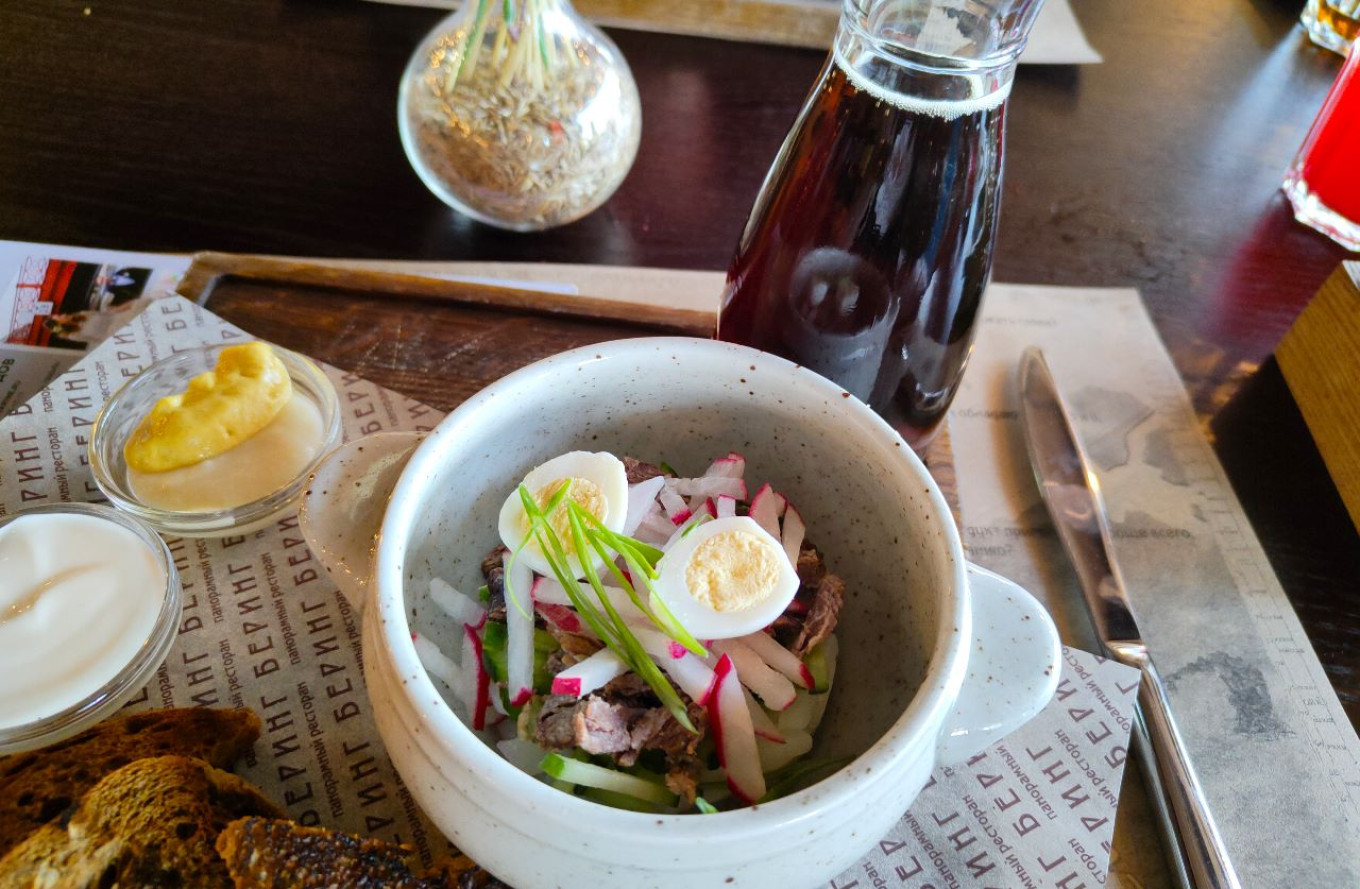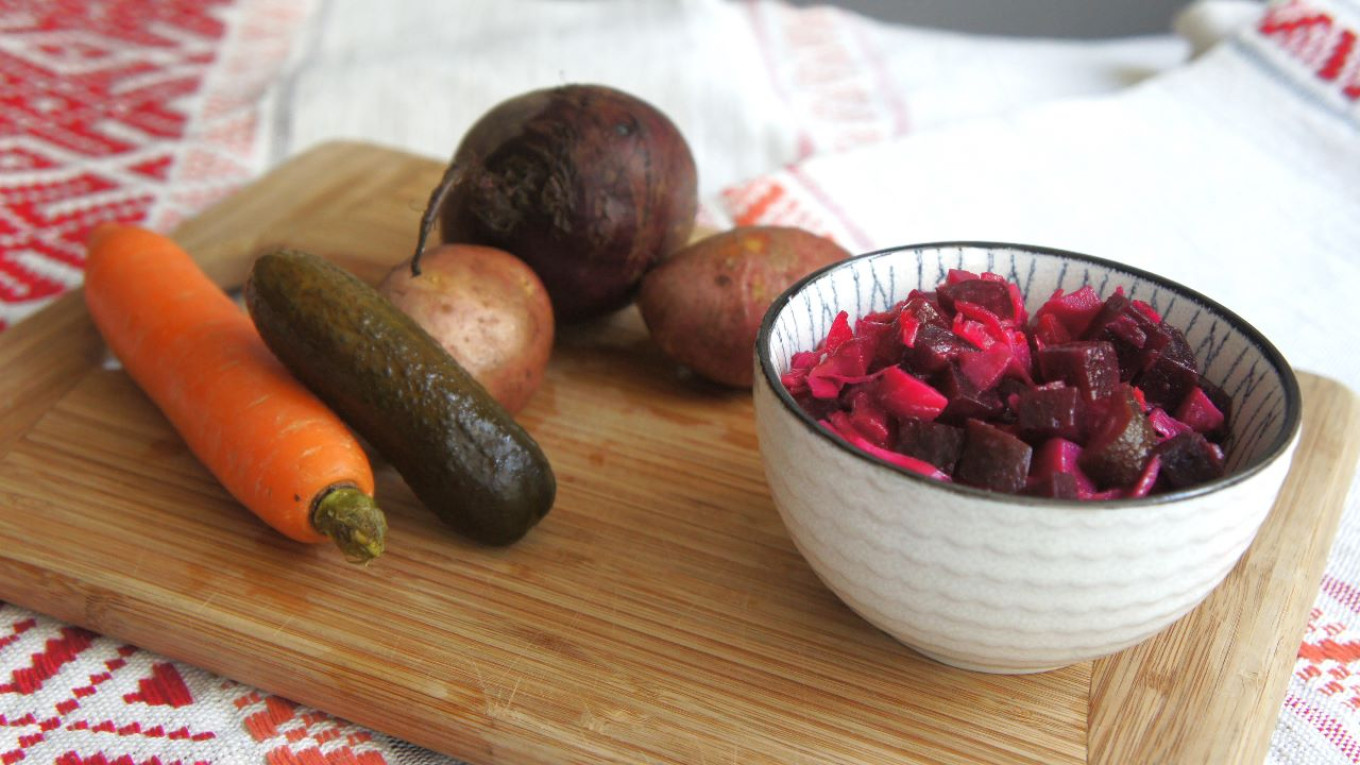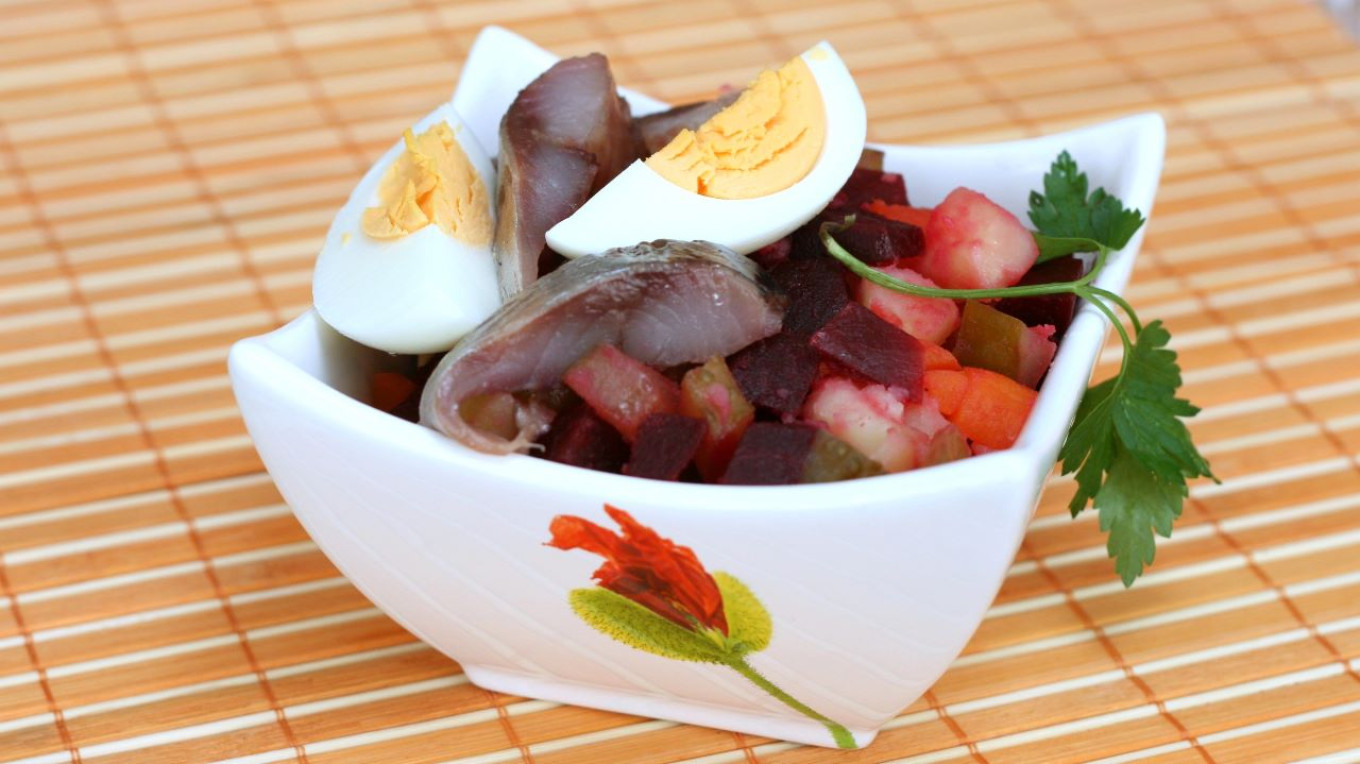In the U.S.S.R., salted herring with onions was every woman's way to arrange a feast in a hurry. But, of course, this fish was also used for more elegant and complex dishes. Herring went into vinaigrettes, forshmak, and a layered vegetable salad called "under a fur coat."
Herring was a favorite treat everywhere — in the homes of the Communist Party elite and in workers' barracks on the city outskirts. Maybe it was so popular because it was simple and inexpensive. Or maybe because it was available even during the hungry years. Or maybe because herring and vodka had long ago become inseparable in the minds of Soviet people — like the Motherland and socialism, the Party and Lenin.
But we loved herring even before socialism. It seems that it has always been on our table, but in actual fact, the production of salted herring has had its ups and downs in our country.
It all began in the early 18th century. A large peninsula between the Dvina and Onega Rivers stretches along the coast of the White Sea for 380 kilometers. The villages situated here by the sea never had plentiful harvests. Their fields produced less than a quarter of the grain they needed to survive. In some places by the sea agriculture was practically nonexistent. So from time immemorial the inhabitants of this region fished and hunted — that was their main diet. They also sold fish to the southern provinces and used the money to buy grains and vegetables at markets.

Depending on the situation and prices, fishing was either boom or bust. Under Empress Elizabeth in the 1750s it almost completely ceased. But under Catherine II, it was suddenly revived.
In 1766, two Dutchmen sent by the Russian government began to teach the Arkhangelsk peasants how to salt and preserve herring. About the same time the White Sea Fishing Company was founded. From the start the Company had a hard time of it. First of all, they immediately had competition. In 1781 a merchant named Svyagin opened his own herring business in Kandalaksha Bay. Contemporaries write that his herrings were almost as good as the Dutch ones. But his competitors tried to subvert his business by spreading rumors about the supposed “bad quality” of White Sea herrings.

At the time, of all the White Sea herrings the Solovetsky herrings were considered the best (Solovki is a group of islands in the White Sea). This was not because the fish itself was better, but because the company prepared them with more care.
This was when new dishes using herring were invented. After all, it was clear that a simple dish of herring with onions was not the only way to eat this delicious fish.
The hot appetizer forshmak came to Russia from Prussia. Our ancestors enjoyed it since the time of Peter the Great in the first half of the 18th century. It was prepared with a variety of meat, both raw and boiled, potatoes, pasta, turnips, cabbage, mushrooms. But it always included herring. The dish was baked and served hot.
Vinaigrette also existed in Russia since the late 18th century. In "The New Russian Cook and Confectioner" published in Moscow in 1792 there is already a recipe for "herring and anchovy vinaigrette." As often happened in Russia, the name of the French sauce became the name of the Russian dish — a salad dressed with a mixture of oil and vinegar.
The vinaigrette we know today is the result of quite a long evolution of this dish. Its individual ingredients — beets, potatoes, pickled cabbage, eggs, herring — appear here and there in old recipes. But they were only assembled into the salad’s modern form in the beginning of the 20th century.
Vinaigrette's heyday was the Soviet period, when it became one of the dishes most characteristic of the era — inexpensive and easy to prepare. And most importantly — made of products available in an era of scarcity.
The main culinary tradition in Russia is not to betray the flavor of childhood. That is why even new dishes copy old flavors in some way. For example, you might have noticed that “herring under a fur coat” is really a clever mix of herring vinaigrette and Salad Olivier dressed with mayonnaise.
Indeed, the idea of “mixing” recipes has been practiced in our cuisine for a long time. Here, for example, is how the lexicographer Vladimir Dahl defined the dish "vinaigrette." In his interpretation — written in the early 1860s — vinaigrette is "okroshka without kvass." Actually, that’s not a bad way to describe it!
Let’s take a look at okroshka in those years. The famous Russian gastronome Ignaty Radetsky noted in his book "St. Petersburg Cuisine" (1862): "Lenten okroshka made of various ingredients. Peel and chop vegetables, salted milk mushrooms and dried apples. Before serving, put a little mustard and salt in a cup, stir and pour in Provençal oil [olive oil]. Stir constantly until the oil and mustard turn into a thick sauce. And then dilute everything with kvass.”
According to Dahl, if you don’t pour in kvass at the end, it’s not okroshka but just a vinaigrette.

In Russia even today in many restaurants okroshka is served this way: a plate with chopped vegetables, eggs and meat and a carafe of kvass. The waiter pours the kvass into the dish at the table (above).
Over time the vegetables were cut into smaller pieces and chefs experimented with the composition. The expensive Provençal oil, which used to be used in vinaigrette dressings, was replaced by sharply flavored sunflower oil and neutral mustard oil. Often a boiled egg was added to make the salad even more filling. There were still echoes of the old days: the dish was made with sliced meat and salted fish. The gold standard of "beets, carrots, potatoes, cucumbers" was attained at the beginning of the 20th century.
In the U.S.S.R. the basic components were modified according to taste and what ingredients were available: peas, sauerkraut and mushrooms. The sliced meats that were in the original recipes disappeared, and only herring has survived.
Some people like the classic recipe; others like more complex versions, with crab, for example, or calamari. The basic salad might include tinned Pacific saury, beans, apples and beet greens. People watching their weight might eliminate the potatoes; people who don’t need to worry about their diets might dress it with mayonnaise.
Vinaigrette is so good and beloved that it has even become a metaphor. The Russian poet Nikolai Nekrasov (1821-1877), who also wrote prose in his youth, wrote a short story called “Préférence and the Sun.” In it he wrote, "Vinaigrette is prepared in Petersburg with great skill from rain, snow, fog, frost and other materials. It turns out that vinaigrette is not even a dish, but almost an art form.”
Let's try to understand its beauty.

Herring Vinaigrette
Ingredients
- 3 medium beets
- 4 medium potatoes
- 2 medium carrots
- 300 grams (10.5 oz) of sauerkraut
- 3 salted cucumber pickles (not marinated; look for kosher pickles and check labels)
- 1 medium onion
- 1 large lightly salted herring
- 4 eggs
- salt, black pepper to taste
- 1 pinch of sugar
- sunflower oil or mayonnaise for dressing
- Optional: can of green peas (about 1 ½ c)
Instructions
- Preheat the oven to 190°C/375°F.
- Wrap each beet in foil and bake until soft. The cooking time depends on the size of the beets.
- Boil unpeeled potatoes or bake them the same way as the beets.
- Boil the carrots.
- Cool and peel the vegetables completely.
- Boil the eggs, cool them, peel off the shells.
- Cut the vegetables into cubes about 1 cm. You don’t need a very small dice.
- Dice the salted cucumbers into pieces the same size as the vegetables.
- If the sauerkraut is in long strips, chop it into pieces like the vegetables.
- Dice an onion into small cubes.
- Mix all the vegetables in a bowl, season with salt and pepper, add a pinch of sugar, drizzle with vegetable oil and stir.
- Peel the skin off the herring, cut into fillets, clean and debone.
- Cut herring into small slices.
- Cut the eggs into quarters.
- To serve, put the vinaigrette in a salad bowl and lay the herring slices and quarters of eggs on top of the vegetables. Garnish with greens.
Dressings
We dress our vinaigrette with unrefined sunflower oil. To keep the vinaigrette very colorful, dress each diced root vegetable separately with oil, and then mix them all together in a bowl. If you prefer, you can also dress the vinaigrette with mayonnaise.
Or you can also use a classic vinaigrette dressing:
Ingredients
- 3 Tbsp extra virgin olive oil
- 2 Tbsp balsamic vinegar
- 1 tsp Dijon mustard
- 1 tsp honey
- Salt, freshly ground black pepper to taste
Instructions
- Put all ingredients into a small jar with a lid. Close with a lid and shake vigorously until thick and well combined.

A Message from The Moscow Times:
Dear readers,
We are facing unprecedented challenges. Russia's Prosecutor General's Office has designated The Moscow Times as an "undesirable" organization, criminalizing our work and putting our staff at risk of prosecution. This follows our earlier unjust labeling as a "foreign agent."
These actions are direct attempts to silence independent journalism in Russia. The authorities claim our work "discredits the decisions of the Russian leadership." We see things differently: we strive to provide accurate, unbiased reporting on Russia.
We, the journalists of The Moscow Times, refuse to be silenced. But to continue our work, we need your help.
Your support, no matter how small, makes a world of difference. If you can, please support us monthly starting from just $2. It's quick to set up, and every contribution makes a significant impact.
By supporting The Moscow Times, you're defending open, independent journalism in the face of repression. Thank you for standing with us.
Remind me later.







